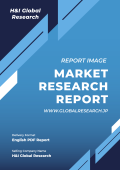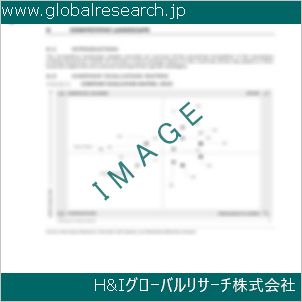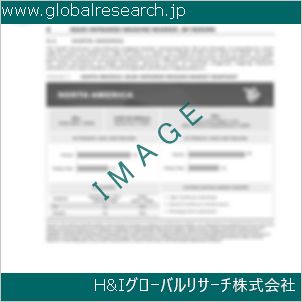1 Automobile Anti-Fog Coatings Market Overview
1.1 Product Definition
1.2 Automobile Anti-Fog Coatings Segment by Type
1.2.1 Global Automobile Anti-Fog Coatings Market Value Growth Rate Analysis by Type 2022 VS 2029
1.2.2 Hydrophilic Coating
1.2.3 Nanocoating
1.3 Automobile Anti-Fog Coatings Segment by Application
1.3.1 Global Automobile Anti-Fog Coatings Market Value Growth Rate Analysis by Application: 2022 VS 2029
1.3.2 Car Windscreen
1.3.3 Car Headlights
1.3.4 Other
1.4 Global Market Growth Prospects
1.4.1 Global Automobile Anti-Fog Coatings Production Value Estimates and Forecasts (2018-2029)
1.4.2 Global Automobile Anti-Fog Coatings Production Capacity Estimates and Forecasts (2018-2029)
1.4.3 Global Automobile Anti-Fog Coatings Production Estimates and Forecasts (2018-2029)
1.4.4 Global Automobile Anti-Fog Coatings Market Average Price Estimates and Forecasts (2018-2029)
1.5 Assumptions and Limitations
2 Market Competition by Manufacturers
2.1 Global Automobile Anti-Fog Coatings Production Market Share by Manufacturers (2018-2023)
2.2 Global Automobile Anti-Fog Coatings Production Value Market Share by Manufacturers (2018-2023)
2.3 Global Key Players of Automobile Anti-Fog Coatings, Industry Ranking, 2021 VS 2022 VS 2023
2.4 Global Automobile Anti-Fog Coatings Market Share by Company Type (Tier 1, Tier 2 and Tier 3)
2.5 Global Automobile Anti-Fog Coatings Average Price by Manufacturers (2018-2023)
2.6 Global Key Manufacturers of Automobile Anti-Fog Coatings, Manufacturing Base Distribution and Headquarters
2.7 Global Key Manufacturers of Automobile Anti-Fog Coatings, Product Offered and Application
2.8 Global Key Manufacturers of Automobile Anti-Fog Coatings, Date of Enter into This Industry
2.9 Automobile Anti-Fog Coatings Market Competitive Situation and Trends
2.9.1 Automobile Anti-Fog Coatings Market Concentration Rate
2.9.2 Global 5 and 10 Largest Automobile Anti-Fog Coatings Players Market Share by Revenue
2.10 Mergers & Acquisitions, Expansion
3 Automobile Anti-Fog Coatings Production by Region
3.1 Global Automobile Anti-Fog Coatings Production Value Estimates and Forecasts by Region: 2018 VS 2022 VS 2029
3.2 Global Automobile Anti-Fog Coatings Production Value by Region (2018-2029)
3.2.1 Global Automobile Anti-Fog Coatings Production Value Market Share by Region (2018-2023)
3.2.2 Global Forecasted Production Value of Automobile Anti-Fog Coatings by Region (2024-2029)
3.3 Global Automobile Anti-Fog Coatings Production Estimates and Forecasts by Region: 2018 VS 2022 VS 2029
3.4 Global Automobile Anti-Fog Coatings Production by Region (2018-2029)
3.4.1 Global Automobile Anti-Fog Coatings Production Market Share by Region (2018-2023)
3.4.2 Global Forecasted Production of Automobile Anti-Fog Coatings by Region (2024-2029)
3.5 Global Automobile Anti-Fog Coatings Market Price Analysis by Region (2018-2023)
3.6 Global Automobile Anti-Fog Coatings Production and Value, Year-over-Year Growth
3.6.1 North America Automobile Anti-Fog Coatings Production Value Estimates and Forecasts (2018-2029)
3.6.2 Europe Automobile Anti-Fog Coatings Production Value Estimates and Forecasts (2018-2029)
3.6.3 China Automobile Anti-Fog Coatings Production Value Estimates and Forecasts (2018-2029)
3.6.4 Japan Automobile Anti-Fog Coatings Production Value Estimates and Forecasts (2018-2029)
4 Automobile Anti-Fog Coatings Consumption by Region
4.1 Global Automobile Anti-Fog Coatings Consumption Estimates and Forecasts by Region: 2018 VS 2022 VS 2029
4.2 Global Automobile Anti-Fog Coatings Consumption by Region (2018-2029)
4.2.1 Global Automobile Anti-Fog Coatings Consumption by Region (2018-2023)
4.2.2 Global Automobile Anti-Fog Coatings Forecasted Consumption by Region (2024-2029)
4.3 North America
4.3.1 North America Automobile Anti-Fog Coatings Consumption Growth Rate by Country: 2018 VS 2022 VS 2029
4.3.2 North America Automobile Anti-Fog Coatings Consumption by Country (2018-2029)
4.3.3 U.S.
4.3.4 Canada
4.4 Europe
4.4.1 Europe Automobile Anti-Fog Coatings Consumption Growth Rate by Country: 2018 VS 2022 VS 2029
4.4.2 Europe Automobile Anti-Fog Coatings Consumption by Country (2018-2029)
4.4.3 Germany
4.4.4 France
4.4.5 U.K.
4.4.6 Italy
4.4.7 Russia
4.5 Asia Pacific
4.5.1 Asia Pacific Automobile Anti-Fog Coatings Consumption Growth Rate by Region: 2018 VS 2022 VS 2029
4.5.2 Asia Pacific Automobile Anti-Fog Coatings Consumption by Region (2018-2029)
4.5.3 China
4.5.4 Japan
4.5.5 South Korea
4.5.6 China Taiwan
4.5.7 Southeast Asia
4.5.8 India
4.6 Latin America, Middle East & Africa
4.6.1 Latin America, Middle East & Africa Automobile Anti-Fog Coatings Consumption Growth Rate by Country: 2018 VS 2022 VS 2029
4.6.2 Latin America, Middle East & Africa Automobile Anti-Fog Coatings Consumption by Country (2018-2029)
4.6.3 Mexico
4.6.4 Brazil
4.6.5 Turkey
5 Segment by Type
5.1 Global Automobile Anti-Fog Coatings Production by Type (2018-2029)
5.1.1 Global Automobile Anti-Fog Coatings Production by Type (2018-2023)
5.1.2 Global Automobile Anti-Fog Coatings Production by Type (2024-2029)
5.1.3 Global Automobile Anti-Fog Coatings Production Market Share by Type (2018-2029)
5.2 Global Automobile Anti-Fog Coatings Production Value by Type (2018-2029)
5.2.1 Global Automobile Anti-Fog Coatings Production Value by Type (2018-2023)
5.2.2 Global Automobile Anti-Fog Coatings Production Value by Type (2024-2029)
5.2.3 Global Automobile Anti-Fog Coatings Production Value Market Share by Type (2018-2029)
5.3 Global Automobile Anti-Fog Coatings Price by Type (2018-2029)
6 Segment by Application
6.1 Global Automobile Anti-Fog Coatings Production by Application (2018-2029)
6.1.1 Global Automobile Anti-Fog Coatings Production by Application (2018-2023)
6.1.2 Global Automobile Anti-Fog Coatings Production by Application (2024-2029)
6.1.3 Global Automobile Anti-Fog Coatings Production Market Share by Application (2018-2029)
6.2 Global Automobile Anti-Fog Coatings Production Value by Application (2018-2029)
6.2.1 Global Automobile Anti-Fog Coatings Production Value by Application (2018-2023)
6.2.2 Global Automobile Anti-Fog Coatings Production Value by Application (2024-2029)
6.2.3 Global Automobile Anti-Fog Coatings Production Value Market Share by Application (2018-2029)
6.3 Global Automobile Anti-Fog Coatings Price by Application (2018-2029)
7 Key Companies Profiled
7.1 3M
7.1.1 3M Automobile Anti-Fog Coatings Corporation Information
7.1.2 3M Automobile Anti-Fog Coatings Product Portfolio
7.1.3 3M Automobile Anti-Fog Coatings Production, Value, Price and Gross Margin (2018-2023)
7.1.4 3M Main Business and Markets Served
7.1.5 3M Recent Developments/Updates
7.2 WeeTect
7.2.1 WeeTect Automobile Anti-Fog Coatings Corporation Information
7.2.2 WeeTect Automobile Anti-Fog Coatings Product Portfolio
7.2.3 WeeTect Automobile Anti-Fog Coatings Production, Value, Price and Gross Margin (2018-2023)
7.2.4 WeeTect Main Business and Markets Served
7.2.5 WeeTect Recent Developments/Updates
7.3 Hydromer
7.3.1 Hydromer Automobile Anti-Fog Coatings Corporation Information
7.3.2 Hydromer Automobile Anti-Fog Coatings Product Portfolio
7.3.3 Hydromer Automobile Anti-Fog Coatings Production, Value, Price and Gross Margin (2018-2023)
7.3.4 Hydromer Main Business and Markets Served
7.3.5 Hydromer Recent Developments/Updates
7.4 NEI Corporation
7.4.1 NEI Corporation Automobile Anti-Fog Coatings Corporation Information
7.4.2 NEI Corporation Automobile Anti-Fog Coatings Product Portfolio
7.4.3 NEI Corporation Automobile Anti-Fog Coatings Production, Value, Price and Gross Margin (2018-2023)
7.4.4 NEI Corporation Main Business and Markets Served
7.4.5 NEI Corporation Recent Developments/Updates
7.5 Optical Coating Technologies
7.5.1 Optical Coating Technologies Automobile Anti-Fog Coatings Corporation Information
7.5.2 Optical Coating Technologies Automobile Anti-Fog Coatings Product Portfolio
7.5.3 Optical Coating Technologies Automobile Anti-Fog Coatings Production, Value, Price and Gross Margin (2018-2023)
7.5.4 Optical Coating Technologies Main Business and Markets Served
7.5.5 Optical Coating Technologies Recent Developments/Updates
8 Industry Chain and Sales Channels Analysis
8.1 Automobile Anti-Fog Coatings Industry Chain Analysis
8.2 Automobile Anti-Fog Coatings Key Raw Materials
8.2.1 Key Raw Materials
8.2.2 Raw Materials Key Suppliers
8.3 Automobile Anti-Fog Coatings Production Mode & Process
8.4 Automobile Anti-Fog Coatings Sales and Marketing
8.4.1 Automobile Anti-Fog Coatings Sales Channels
8.4.2 Automobile Anti-Fog Coatings Distributors
8.5 Automobile Anti-Fog Coatings Customers
9 Automobile Anti-Fog Coatings Market Dynamics
9.1 Automobile Anti-Fog Coatings Industry Trends
9.2 Automobile Anti-Fog Coatings Market Drivers
9.3 Automobile Anti-Fog Coatings Market Challenges
9.4 Automobile Anti-Fog Coatings Market Restraints
10 Research Finding and Conclusion
11 Methodology and Data Source
11.1 Methodology/Research Approach
11.1.1 Research Programs/Design
11.1.2 Market Size Estimation
11.1.3 Market Breakdown and Data Triangulation
11.2 Data Source
11.2.1 Secondary Sources
11.2.2 Primary Sources
11.3 Author List
11.4 Disclaimer
| ※参考情報 自動車用防曇コーティング剤とは、車両のウィンドウやミラーなどのガラス面に施すことで、曇りにくくする効果を持つ特殊なコーティング剤を指します。防曇コーティングは、特に湿度が高い環境や急激な気温変化によりガラス面に発生する曇りを防ぐために開発されました。運転中の視界を確保することは、安全運転にとって非常に重要であり、防曇コーティングはその一役を担います。 まず、自動車用防曇コーティング剤の定義を明確にします。防曇コーティングは、主にフロントガラス、サイドウィンドウ、リアガラス、ミラーなどに使用され、これらの面に薄い膜を形成することで、結露や曇りの発生を抑えることができます。この膜は、一般的に親水性または撥水性の特性を持ち、周囲の湿気を均一に分散させたり、撥水させることで、視界をクリアに保ちます。 次に、防曇コーティング剤の特徴についてご紹介します。防曇コーティングは、主にその持続性、効果的な曇り防止、そして施工の容易さが特徴とされています。持続性については、耐久性が高く、長期間にわたって効果を発揮することが求められます。また、効果的な曇り防止は、特に寒い季節や雨の日に重要であり、コーティング剤がどれだけ優れた性能を持つかが選定のポイントになります。さらに、施工の容易さも重要な要因であり、多くの製品がスプレータイプや拭き取りタイプなど、ユーザーが簡単に使用できる形式で提供されています。 防曇コーティング剤にはいくつかの種類があります。一般的に、親水性と撥水性の2つのタイプに大別されます。親水性コーティングは、水分を均一に広げて、曇りの原因となる水滴の形成を防ぐものです。一方、撥水性コーティングは、水滴を弾いて流れ落とすことで、視界を確保します。どちらのタイプもそれぞれに利点があり、使用環境や目的に応じて選ぶことが重要です。また、一部の製品には抗菌機能やUVカット機能が備わっているものもあり、追加の利便性を提供しています。 用途について見ていくと、防曇コーティング剤は主に自動車のガラス面に使用されることが一般的ですが、他の用途としてはオートバイ、船舶、さらには家庭用窓ガラスにも適用することができます。特にオートバイでは、ヘルメットのシールドに防曇コーティングを施すことで、冷たい風や湿気の中でも視界を確保することができます。また、家庭用の浴室の鏡や窓に使用することで、結露を防ぎ、日常生活の快適さを向上させることも可能です。 関連技術としては、ナノテクノロジーが挙げられます。最近では、ナノ粒子を利用したコーティング剤が多く開発されており、これにより従来のコーティング剤よりももる性能向上が見込まれています。ナノ粒子は、その微細なサイズにより、コーティング剤の密着性を高め、耐久性を向上させることができるため、長持ちする効果を期待できるのです。また、一部の先進的な製品では、自動洗浄機能を持つコーティング剤も研究されています。この技術により、雨水に含まれる汚れを自動的に洗い流すことができるため、常にクリアな視界を保てるようになります。 自動車用防曇コーティング剤を選ぶ際には、使用する環境や目的に合わせて選ぶことが重要です。例えば、冬場の寒さや湿度が高い地域に住んでいる方は、特に耐久性や効果を重視して選ぶべきです。また、施工の手間も考慮に入れると、スプレータイプや拭き取りタイプの製品が便利です。さらには、口コミや評価を参考にすることで、より効果的な製品を見つけることができるでしょう。 最後に、自動車用防曇コーティング剤の市場は、今後も成長が期待されています。安全運転のための視界確保というニーズは常にあり、技術革新も進んでいるためです。今後の研究開発によって、より高性能で持続性のある製品が登場することに期待が寄せられています。防曇コーティング剤は、運転者の安全と快適さをサポートする重要なアイテムとして、今後ますます注目されることでしょう。 |
❖ 免責事項 ❖
http://www.globalresearch.jp/disclaimer












